Grow Lemongrass at Home and transform your kitchen into a fragrant oasis! Have you ever dreamt of snipping fresh lemongrass straight from your garden for your favorite Thai curry or soothing herbal tea? Well, dream no more! This DIY guide will unlock the secrets to cultivating this versatile herb right in your own backyard, balcony, or even windowsill.
Lemongrass, with its vibrant citrusy aroma, has been a staple in Asian cuisine and traditional medicine for centuries. Originating in Southeast Asia, it’s revered not only for its culinary uses but also for its potential health benefits, ranging from digestive aid to stress relief. Imagine the satisfaction of knowing exactly where your lemongrass comes from, free from pesticides and bursting with flavor!
In today’s world, where we’re increasingly conscious of what we consume and where it comes from, growing your own food is more appealing than ever. Plus, let’s be honest, store-bought lemongrass can sometimes be a bit… lackluster. This DIY trick will empower you to grow lemongrass at home that’s fresher, more flavorful, and readily available whenever you need it. I’m excited to share these simple, effective techniques that will have you harvesting your own lemongrass in no time. Let’s get started!
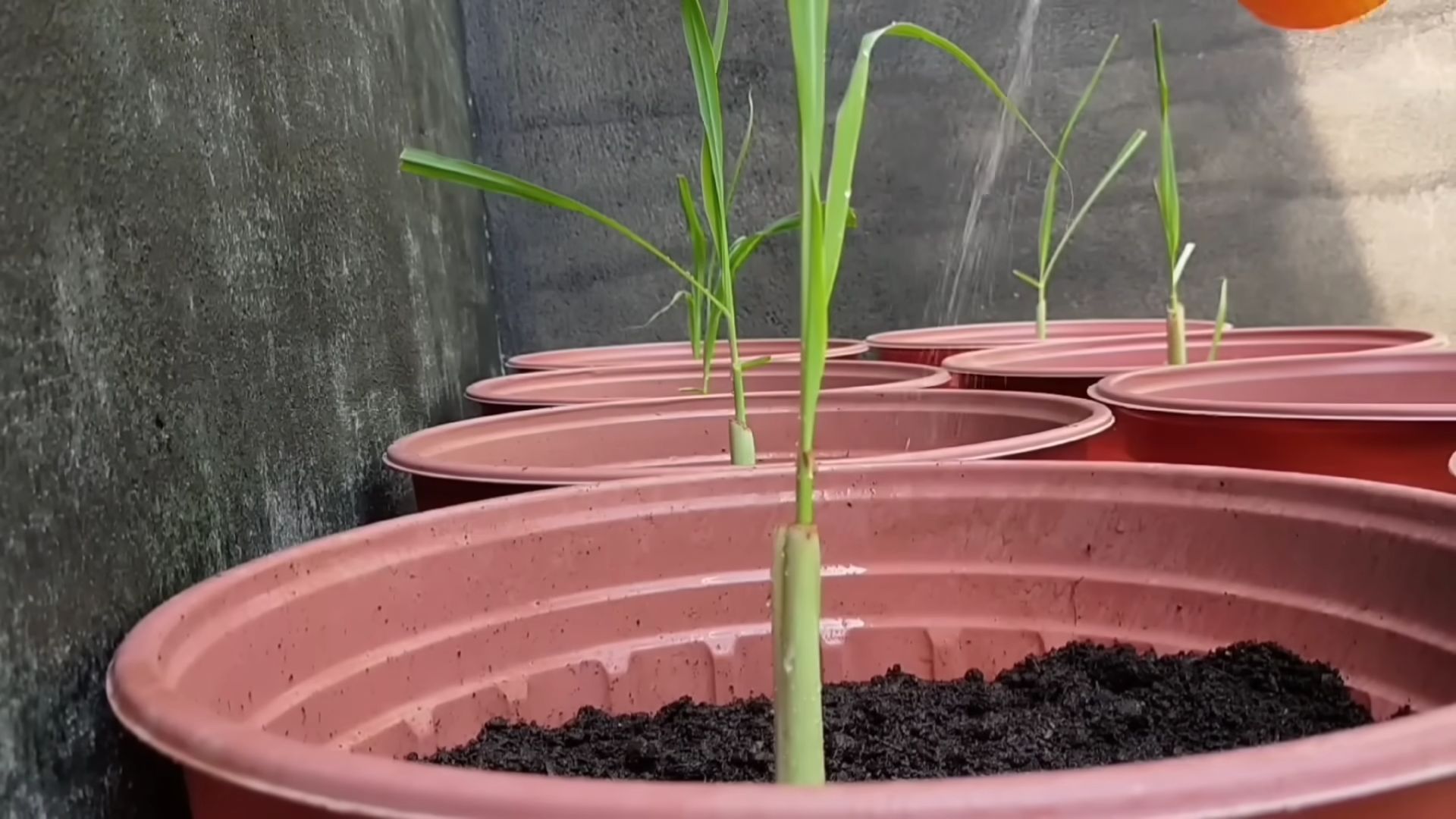
Grow Your Own Lemongrass: A Beginner’s Guide
Hey there, fellow plant enthusiasts! Ever dreamt of having fresh, fragrant lemongrass right at your fingertips? Well, dream no more! Growing lemongrass at home is surprisingly easy, even if you don’t have a green thumb. I’m going to walk you through everything you need to know, from choosing the right stalks to harvesting your very own supply. Get ready to add a zesty, citrusy kick to your cooking and a refreshing aroma to your garden!
Choosing Your Lemongrass Stalks
Before we dive into the planting process, let’s talk about where to get your lemongrass. You have a couple of options:
* Grocery Store Stalks: This is the most common and budget-friendly option. Look for lemongrass stalks that are firm, healthy-looking, and have a bulbous base. Avoid stalks that are dry, shriveled, or have any signs of mold. The fresher, the better!
* Online Nurseries: If you want a specific variety of lemongrass or can’t find good stalks at your local grocery store, online nurseries are a great resource. They often offer a wider selection and guarantee healthy plants.
* Local Nurseries: Check out your local nurseries! They might carry lemongrass plants or stalks, and the staff can offer valuable advice specific to your region.
Rooting Your Lemongrass Stalks in Water
This is where the magic begins! We’re going to coax those grocery store stalks into sprouting roots.
1. Prepare the Stalks: Trim the top of the lemongrass stalks, leaving about 4-5 inches of the base. Remove any dry or brown outer layers, exposing the fresh, green inner layers. This will help the stalks absorb water and encourage root growth.
2. Find a Suitable Container: Choose a glass or jar that’s tall enough to support the stalks and wide enough to hold several stalks without overcrowding them. I like to use mason jars, but any clean container will do.
3. Add Water: Fill the container with fresh, clean water. Make sure the water level covers the bottom 2-3 inches of the stalks.
4. Place the Stalks in Water: Arrange the lemongrass stalks in the container, ensuring that the cut ends are submerged in water.
5. Find a Sunny Spot: Place the container in a warm, sunny location. A windowsill that receives at least 6 hours of sunlight per day is ideal.
6. Change the Water Regularly: This is crucial! Change the water every 1-2 days to prevent bacteria growth and keep the water fresh.
7. Be Patient: Rooting can take anywhere from 1-3 weeks, so don’t get discouraged if you don’t see roots right away. Just keep changing the water and providing plenty of sunlight. You should start to see small white roots emerging from the base of the stalks.
Planting Your Rooted Lemongrass
Once your lemongrass stalks have developed a good network of roots (about 1-2 inches long), it’s time to plant them in soil!
1. Choose the Right Pot (if planting in a container): Select a pot that’s at least 12 inches in diameter and 12 inches deep. Lemongrass needs plenty of room to grow, and a larger pot will prevent it from becoming root-bound. Make sure the pot has drainage holes to prevent waterlogging.
2. Prepare the Soil: Lemongrass thrives in well-draining, fertile soil. You can use a commercial potting mix or create your own by mixing equal parts garden soil, compost, and perlite or sand.
3. Planting in the Ground: Choose a location that receives at least 6 hours of sunlight per day. Amend the soil with compost or well-rotted manure to improve drainage and fertility.
4. Dig a Hole: Dig a hole that’s slightly larger than the root ball of the lemongrass stalk.
5. Carefully Remove the Stalks from Water: Gently remove the rooted lemongrass stalks from the water, being careful not to damage the roots.
6. Plant the Stalks: Place the lemongrass stalk in the hole, ensuring that the top of the root ball is level with the surrounding soil.
7. Fill the Hole: Fill the hole with soil, gently firming it around the base of the stalk.
8. Water Thoroughly: Water the newly planted lemongrass thoroughly, until the water drains out of the bottom of the pot or into the surrounding soil.
Caring for Your Lemongrass
Now that your lemongrass is planted, it’s time to provide it with the care it needs to thrive.
1. Watering: Lemongrass needs consistent moisture, especially during hot weather. Water deeply whenever the top inch of soil feels dry to the touch. Avoid overwatering, as this can lead to root rot.
2. Fertilizing: Feed your lemongrass with a balanced fertilizer every 4-6 weeks during the growing season (spring and summer). Follow the instructions on the fertilizer package. You can also use organic fertilizers like compost tea or fish emulsion.
3. Sunlight: Lemongrass loves sunlight! Make sure it receives at least 6 hours of direct sunlight per day. If you’re growing it indoors, place it near a sunny window or use a grow light.
4. Pruning: Prune your lemongrass regularly to encourage new growth and prevent it from becoming too leggy. You can trim the leaves back by about one-third every few weeks.
5. Overwintering (for colder climates): Lemongrass is a tropical plant and is not frost-hardy. If you live in a colder climate, you’ll need to bring your lemongrass indoors before the first frost. Place it in a sunny location and water it sparingly during the winter months. You can also cut back the foliage to about 6 inches to conserve energy.
6. Pest and Disease Control: Lemongrass is generally pest-resistant, but it can occasionally be affected by aphids or spider mites. If you notice any pests, spray the plant with insecticidal soap or neem oil. Root rot can be a problem if the soil is not well-draining.
Harvesting Your Lemongrass
The best part! You can start harvesting your lemongrass when the stalks are at least 1/2 inch in diameter and about 12 inches tall. This usually takes about 3-4 months after planting.
1. Choose the Stalks: Select the stalks you want to harvest. Look for the thickest, healthiest-looking stalks.
2. Cut the Stalks: Use a sharp knife to cut the stalks close to the ground.
3. Prepare for Use: Remove the tough outer layers of the stalk, leaving the tender inner core. You can use the entire stalk, but the lower portion is the most flavorful.
4. Storage: Freshly harvested lemongrass can be stored in the refrigerator for up to 2 weeks. Wrap it in a damp paper towel and place it in a plastic bag. You can also freeze lemongrass for longer storage. Simply chop it into small pieces and freeze it in an airtight container.
Using Your Homegrown Lemongrass
Now that you have a bountiful supply of fresh lemongrass, it’s time to get creative in the kitchen! Here are just a few ideas:
* Soups and Stews: Add lemongrass to soups and stews for a fragrant, citrusy flavor. It’s a key ingredient in many Thai and Vietnamese dishes.
* Curries: Lemongrass is a must-have ingredient in curries. It adds a bright, refreshing note that complements the other spices.
* Teas: Brew lemongrass tea for a soothing and refreshing beverage. Simply steep a few stalks in hot water for 5-10 minutes.
* Marinades: Use lemongrass in marinades for chicken, fish, or tofu. It adds a delicious flavor and tenderizes the meat.
* Stir-fries: Add lemongrass to stir-fries for a burst of flavor.
* Essential Oils: While more complex, you can explore extracting essential oils from your lemongrass for aromatherapy or natural cleaning products.
Troubleshooting
Even with the best care, you might encounter a few challenges along the way. Here are some common problems and how to fix them:
* Yellowing Leaves: This could be a sign of overwatering, underwatering, or nutrient deficiency. Check the soil moisture and adjust your watering schedule accordingly. Fertilize the plant with a balanced fertilizer.
* Slow Growth: This could be due to insufficient sunlight, poor soil, or cold temperatures. Make sure the plant is getting enough sunlight and fertilize it regularly. If you live in a colder climate, bring the plant indoors during the winter months.
* Root Rot: This is caused by overwatering and poor drainage. Make sure the soil is well-draining and avoid overwatering. If you suspect root rot, repot the plant in fresh soil.
* Pests: Aphids and spider mites can occasionally
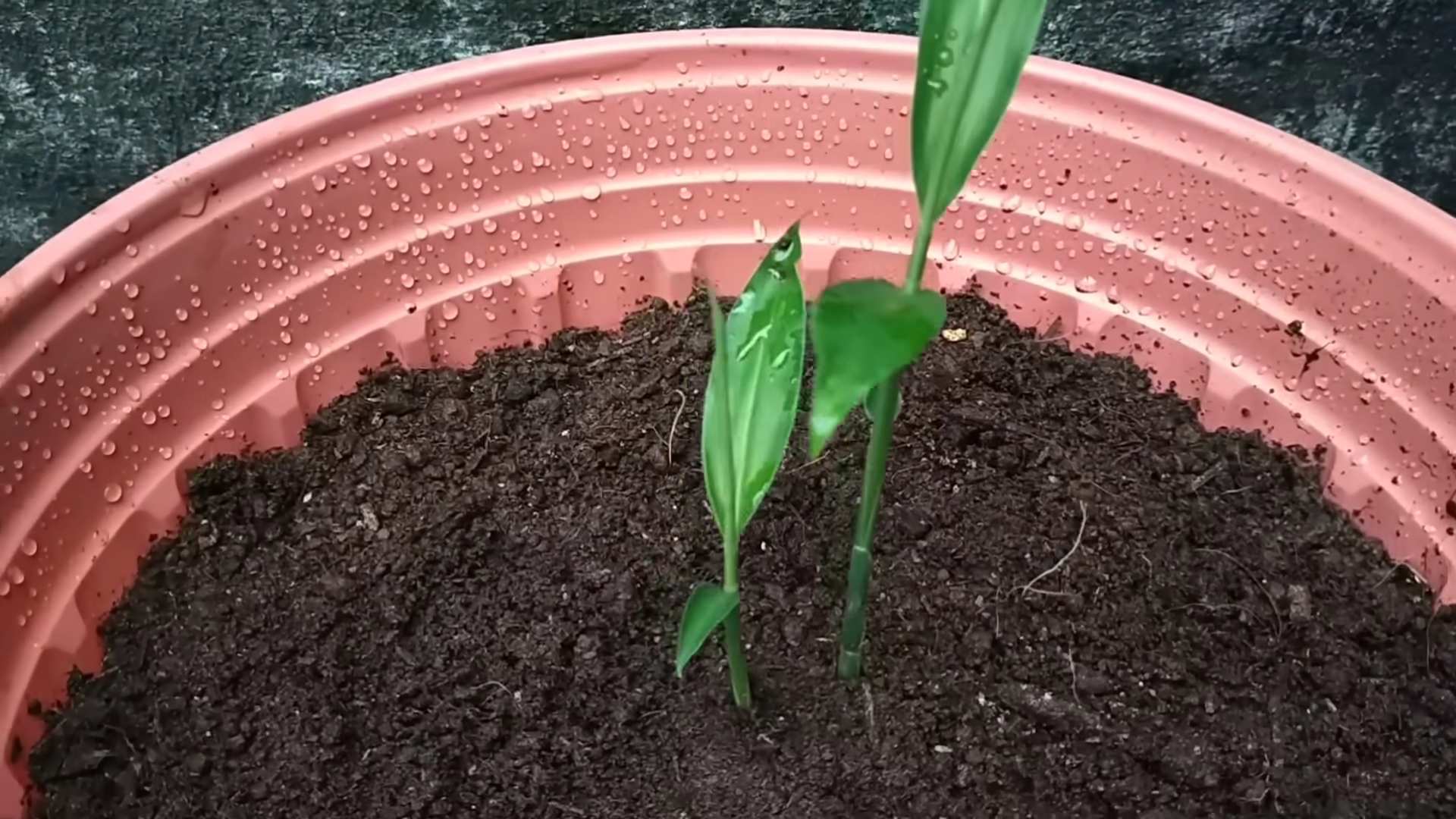
Conclusion
So, there you have it! Growing lemongrass at home isn’t just a fun project; it’s a gateway to fresher, more flavorful meals, a sustainable practice, and a cost-effective way to always have this vibrant herb on hand. Forget those wilted, overpriced stalks at the grocery store. Imagine stepping into your garden or onto your balcony and snipping off exactly what you need, bursting with aroma and ready to elevate your culinary creations.
This DIY approach to cultivating lemongrass offers a multitude of benefits. You’re in control of the growing environment, ensuring your lemongrass is free from harmful pesticides and chemicals. You’re reducing your carbon footprint by minimizing transportation needs. And, perhaps most importantly, you’re experiencing the satisfaction of nurturing something from a simple stalk to a thriving plant.
But the beauty of growing lemongrass at home lies not only in its practicality but also in its versatility. Feel free to experiment with different varieties of lemongrass, each boasting subtle variations in flavor and aroma. Some gardeners prefer the ‘Cymbopogon citratus’ variety, known for its classic citrusy notes, while others opt for ‘Cymbopogon flexuosus,’ which offers a slightly more floral and delicate profile.
Consider planting your lemongrass in decorative pots to add a touch of greenery to your patio or balcony. Or, if you have a larger garden, dedicate a small patch to this fragrant herb. You can even companion plant it with other herbs like basil and mint, creating a harmonious and aromatic garden ecosystem.
Don’t be afraid to get creative with your lemongrass harvest. Beyond the usual soups and stir-fries, try infusing it into teas, cocktails, or even homemade cleaning solutions. The possibilities are endless!
We wholeheartedly encourage you to embark on this rewarding journey of growing lemongrass at home. It’s a simple, sustainable, and incredibly satisfying way to enhance your culinary experiences and connect with nature.
And now, we want to hear from you! Have you tried growing lemongrass at home? What tips and tricks have you discovered along the way? Share your experiences, successes, and even your challenges in the comments below. Let’s create a community of lemongrass enthusiasts and learn from each other. Your insights could inspire others to take the plunge and discover the joys of homegrown lemongrass. We are confident that with a little care and attention, you’ll be enjoying the fresh, vibrant flavor of homegrown lemongrass in no time. Happy growing!
Frequently Asked Questions (FAQ)
What is the best time of year to start growing lemongrass?
The ideal time to start growing lemongrass is in the spring or early summer, after the last frost has passed. This allows the plant to establish itself during the warmer months and build a strong root system before the onset of winter. If you live in a region with mild winters, you can potentially start growing lemongrass year-round. However, in colder climates, it’s best to start indoors and transplant outdoors when the weather warms up. Starting indoors gives the plant a head start and protects it from harsh weather conditions.
How much sunlight does lemongrass need?
Lemongrass thrives in full sunlight, requiring at least 6-8 hours of direct sunlight per day. Insufficient sunlight can lead to leggy growth and reduced flavor intensity. If you’re growing lemongrass indoors, place it near a sunny window or supplement with grow lights. When transplanting outdoors, choose a location that receives ample sunlight throughout the day. Observe the area throughout the day to ensure it receives the necessary sunlight.
What type of soil is best for growing lemongrass?
Lemongrass prefers well-draining soil that is rich in organic matter. A slightly acidic to neutral pH (6.0-7.0) is ideal. Amend heavy clay soils with compost or other organic materials to improve drainage. You can also use a potting mix specifically formulated for herbs. Before planting, test the soil pH to ensure it’s within the optimal range. Regular soil amendments with compost will help maintain soil fertility and drainage.
How often should I water my lemongrass plant?
Lemongrass needs consistent moisture, especially during the growing season. Water deeply whenever the top inch of soil feels dry to the touch. Avoid overwatering, as this can lead to root rot. Reduce watering frequency during the winter months when the plant is dormant. Check the soil moisture regularly, especially during hot and dry weather. Mulching around the base of the plant can help retain moisture and suppress weeds.
How do I harvest lemongrass?
To harvest lemongrass, use a sharp knife to cut the stalks near the base of the plant. Select the thicker, more mature stalks first. You can harvest lemongrass throughout the growing season as needed. After harvesting, remove the outer leaves and use the tender inner core in your recipes. The outer leaves can be used to make tea or broth. Regular harvesting encourages new growth and keeps the plant productive.
Can I grow lemongrass in a container?
Yes, lemongrass can be successfully grown in containers. Choose a pot that is at least 12 inches in diameter to accommodate the plant’s root system. Ensure the pot has drainage holes to prevent waterlogging. Use a well-draining potting mix and fertilize regularly. Container-grown lemongrass may require more frequent watering than plants grown in the ground. Consider using a self-watering container to simplify watering.
How do I fertilize lemongrass?
Lemongrass benefits from regular fertilization, especially during the growing season. Use a balanced fertilizer (e.g., 10-10-10) every 4-6 weeks. You can also use organic fertilizers such as compost tea or fish emulsion. Avoid over-fertilizing, as this can lead to excessive foliage growth at the expense of flavor. Follow the fertilizer instructions carefully and adjust the dosage as needed.
How do I overwinter lemongrass in cold climates?
Lemongrass is a tropical plant and is not frost-hardy. In cold climates, you can overwinter lemongrass indoors. Before the first frost, dig up the plant and pot it in a container. Cut back the foliage to about 6 inches. Place the plant in a cool, bright location and water sparingly. Alternatively, you can take cuttings from the plant and root them indoors. In the spring, transplant the lemongrass back outdoors after the last frost.
What are some common pests and diseases that affect lemongrass?
Lemongrass is generally pest-resistant, but it can occasionally be affected by aphids, spider mites, or scale insects. Treat infestations with insecticidal soap or neem oil. Root rot can occur if the soil is poorly drained. Ensure the soil is well-draining and avoid overwatering. Regularly inspect the plant for signs of pests or diseases and take action promptly.
Can I propagate lemongrass from cuttings?
Yes, lemongrass can be easily propagated from cuttings. Take cuttings from healthy, mature stalks. Remove the lower leaves and place the cuttings in a glass of water. Change the water every few days. After a few weeks, roots will begin to develop. Once the roots are about an inch long, transplant the cuttings into pots filled with well-draining potting mix. Keep the soil moist until the plants are established. This is a great way to expand your lemongrass collection or share plants with friends.

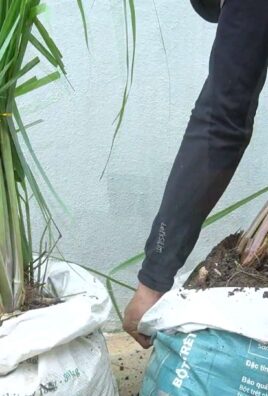
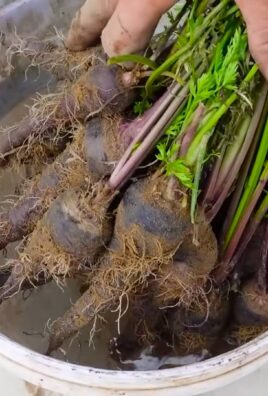
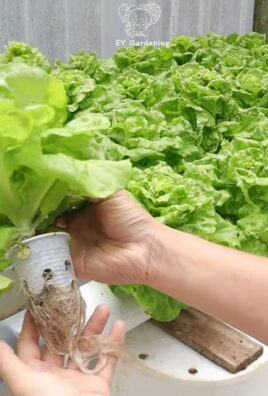
Leave a Comment